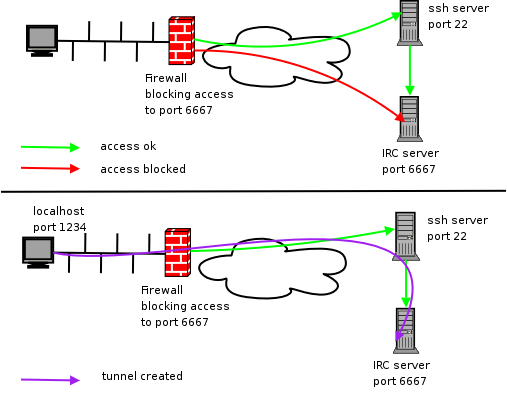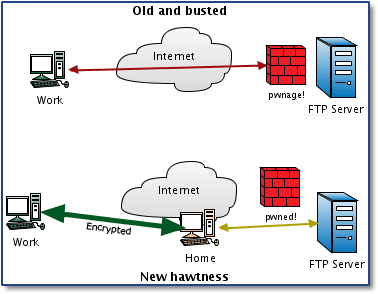

- #Rsync through ssh proxy firewall how to
- #Rsync through ssh proxy firewall code
- #Rsync through ssh proxy firewall password
- #Rsync through ssh proxy firewall free
#Rsync through ssh proxy firewall code
If I'm pushing & pulling code from GitHub to/from this development instance I'm gonna need to either have a private key on that development instance or have agent forwarding back to my local.

So I'm an engineer, and instead of developing on my local I do development on an EC2 instance in AWS (there are a variety of reasons this may be preferential or even required). that you run into trouble.Ĭonsider a remote development instance. It's when you want to use some other tool that tunnels over SSH - scp, git, sftp, rsync, etc. In general I'd say SSHing from a remote box to another remote box is a non-issue since you can always use some sort of tunneling/bastioning to make that work.
#Rsync through ssh proxy firewall free
I have an SSH key for each "thing", and each key is kept in a different keyring via, _precisely_ to avoid that problem.Īs an example, an attacker gaining root on my Oracle Cloud free server will not be able to clone all my Github repos with it: I only use that key to connect to that server, and while I may have the github key unlocked at the same time - that's on a different keyring which the server has no visibility of. My "github" key only grants access to my github repos, not to my bitbucket repos or to my DigitalOcean servers, or my Scaleway servers. Using a private key per system or set of systems means that such an attacker would only gain access to what that key grants them access to. If a bad guy gets root on one server you're currently connected via ssh with, and forwarding said key via, they can also access (unless otherwise firewalled) all systems that ssh key grants them access to. To tunnel vnc over ssh to a remote mac(I do this with mac) You can also use Host * at the beginning of your config to do this for all hosts
#Rsync through ssh proxy firewall password
If you always want to use a password to log into a machine, but want to be able to log in in other windows to the same machine without a password:ĬontrolPath will multiplex all activity to that host through one tcp connection IdentitiesOnly means it will only send that one identity for that one machine (otherwise it will try all of them, like a janitor trying to open a locker with a big keychain of identical keys) Or if your machine doesn't have ssh-copy-id (older macs) Ĭat ~/.ssh/id_x_ed25519.pub | ssh x "cat >. Use ssh-copy-id to copy the identity to the target machine so it lets you in:

To do automatic login, I generate identities for some machines I give hosts short names so you can `ssh x` Then Edit /etc/ssh/sshd_config and remark port 22 and add another port, for example 12345.I always create and heavily use ~/.ssh/config If you have Selinux enabled, you should run this command # semanage port -a -t ssh_port_t -p tcp 12345 # iptables -A RH-Firewall-1-INPUT -m state -state NEW -m tcp -p tcp -dport 12345 -j ACCEPT On RHEL/CentOS/Scientific Linux 6 and before, you should allow new SSH port with command below. # firewall-cmd -add-port 12345/tcp -permanent

On RHEL, CentOS, and Scientific Linux 7, allow the new port through your firewall.
#Rsync through ssh proxy firewall how to
How to change default SSH Portīefore change port number, first open firewall port to new SSH Port, example change to port 12345, to prevent locked your self because SSH port closed by firewall. And it will cause many brute force SSH attacks.įor security reasons, Linux administrator should change to custom port to securing SSH access to Unix server from brute force attacks. SSH default port is 22, every body knew it.


 0 kommentar(er)
0 kommentar(er)
